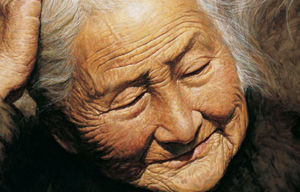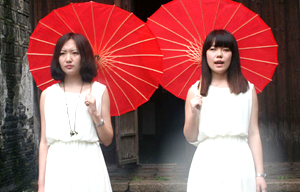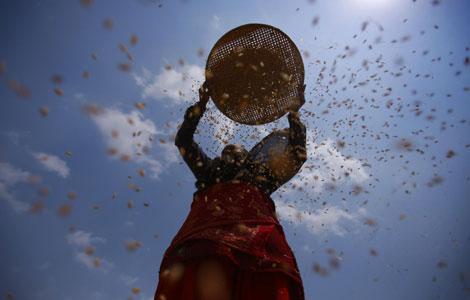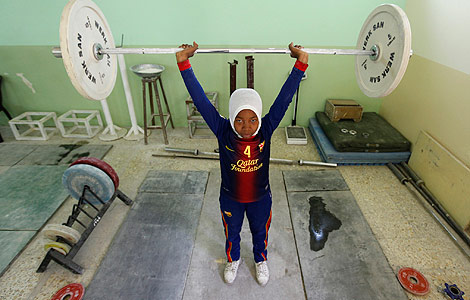British royal paintings exhibition charts 250 years of fashion
Updated: 2013-05-10 15:41
(English.news.cn)
|
|||||||||||
A new exhibition of paintings from the British royal collection and historic clothing cast an unusual light on the clothing and accessories of European royalty over 250 years.
The exhibition "In Fine Style: The Art of Tudor and Stuart Fashion" opens daily from May 10 to October 6 at the Buckingham Palace Art Gallery.
The show, which follows a well-received exhibition of Leonardo da Vinci's sketches from the Royal Collection in 2012, includes more than 60 portraits and some of the most famous paintings from Queen Elizabeth II's personal collection including a Rembrandt portrait, and several well-known paintings by Anthony van Dyck.
Besides, the bodice, doublet and even armour could give visitors a three-dimensional understanding of what people were wearing hundreds of years ago.
"This exhibition tells a story of fashion, in the 16th and 17th centuries through portraiture," said Anna Reynolds, curator of paintings with the Royal Collection Trust.
"Fashion conveyed all sorts of different messages at that time, and the most important one was the demonstration of your status and how wealthy you were, and where exactly you were in society," she said.
MESSAGES FROM ROYAL DRESSES
The exhibition started with a portrait of Henry VIII (1509-1547), who was described by the Venetian ambassador as "the best dressed sovereign in the world." He emphasized power with his dresses by using colors like gold, black, red and which, where were traditionally associated with monarchy. He also wore silk, fur, cloth of gold, as well as large jewels so as to look most splendid in the crowd.
Equally impressive was a portrait of Elizabeth I, who was 13-year-old then. After her mother Anne Bolyn was executed, she was deemed illegitimate. But Elizabeth was wearing a crimson gown, the rare dye of which was derived from crushed insects and showed that she was still in royal favor. Her fore sleeves were made of cloth of silver, woven with gold, which was used only by the royal family.
Status was reflected not only by colors and fabrics, but adornments and accessories as well.
Anne of Denmark, queen consort of James I, was known for her adoration of jewelry. Her hair jewels with the pattern of C4 were from her brother Christian IV of Denmark, while an S on her collar was from her mother Sophia. These details suggested that she was not only wife of an English king, but had strong connection with Denmark.
Lace was also an important indicator of social status and wealth. According to Reynolds, another highlight at the exhibition was a triple portrait of Charles I (1625-49). Anthony van Dyck was commissioned to paint the king in three different angles for sculptor Gian Lorenzo Bernini to make a bust. Charles I wore three lace collars with different designs so as to provide the sculptor a menu of options.
Related Stories
Exhibition displays art and relics of two civilizations 2013-05-10 09:43
The art of pairing Chinese wine with food 2013-05-07 13:29
China's Disabled Art Troupe visits Latvia 2013-05-06 18:03
The lost art of a gallery 2013-05-06 10:18
Curator finds new life in China's art 2013-04-28 11:32
Today's Top News
MOC queries World Bank China business report
Exporters urged to 'optimize'
Producer Price Index continues to decline
India's top diplomat praises cooperation
China urges UK concrete action for ties
Scientists paying more to reach world
Possible EU punitive duties opposed
Japan protests Okinawa report
Hot Topics
Lunar probe , China growth forecasts, Emission rules get tougher, China seen through 'colored lens', International board,
Editor's Picks

|

|
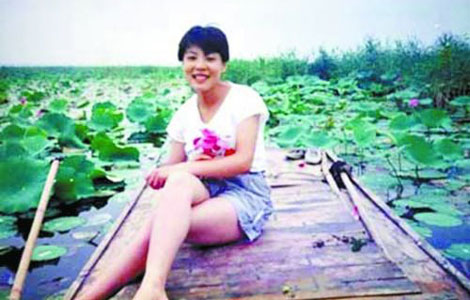
|

|
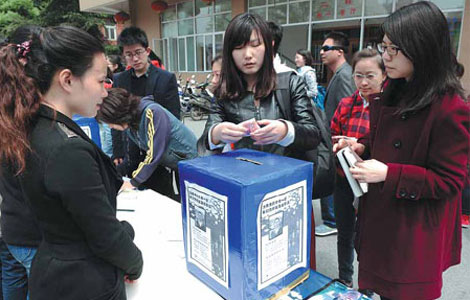
|

|
